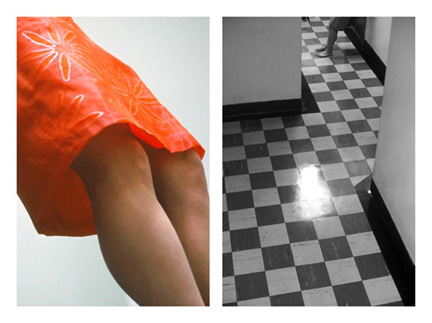
Viewing Record 1 of 18 Fundamentals of Photography
About the Photographer
Probst, Barbara
German, b. 1964
Barbara Probst’s Exposures are sets of photographs that depict the same subject from various angles at precisely the same instant. Probst makes the photographs using radio controls, synchronized cable releases, and sometimes multiple photographers. Despite the proximity of the cameras and the simultaneity of their exposures, the resulting images are extremely diverse in style, atmosphere, and content, concretely demonstrating that photographs are highly selective interpretations of reality.
In Exposures Probst displays sensitivity to representational complexity, as she illustrates the myriad ways in which a moment can be depicted, and by extension, experienced. Her fragmented subjects and use of multiple perspectives have many art-historical precedents, including Édouard Manet’s painting Bar at the Folies Bergère (1882), which shows the barmaid’s back reflected in the mirror at an impossible angle, or Georges Braque and Pablo Picasso’s Cubist compositions that represent several sides of an object simultaneously. A photographic forerunner might be Ilse Bing’s Self-Portrait with Leica (1931), a Cubist-inspired image shot into a mirror, depicting the camera-wielding artist from multiple angles. Like all of these precursors, Probst rejects unified illusion and takes delight in confusing the viewer. And like Bing, her use of photography to emphasize the schism between reality and artifice exhibits recognition of the fact that, although photography does possess evidentiary value, it is incapable of delivering unambiguous meaning.
Probst interposes a spatial map onto our experience of her work. Like architectural renderings that we might “walk” through in our minds, or Andy Warhol’s Dance Diagram (1962), which invites us to imagine our bodies moving through space, Probst’s Exposures provide us with a plan of spatial relations that we piece together in our heads. By inviting us to imagine the spaces beyond the photographic frames, and where those spaces overlap, as well as the relationships between the photographers and their subjects, each Exposure is a mental puzzle that asks us to actively engage. By doing so, we are rewarded with a heightened awareness of the act of looking, and the opportunity to enter a transitive, imaginative state of moving through space and time.
Probst studied at the Kunstakademie Düsseldorf, Germany and the Akademie der Bildende Kunste, Munich, Germany (1984-1990). Solo exhibitions of her work have been held at Sprüth Magers Projekte, Munich, Germany; Murray Guy, New York; Kuckei + Kuckei, Berlin, Germany, and she has participated in group exhibitions at the Museum of Modern Art, New York; Museum of Photographic Arts, San Diego; Kunstmuseum, Aarhus, Denmark; and other venues. Her work is held in the permanent collections of the San Francisco Museum of Modern Art; Museum of Modern Art, New York; Museum of Contemporary Art, Denver, CO; and FRAC Bretagne, Châteaugiran, France. Probst lives and works in New York and Munich.
Adapted from the introduction by Karen Irvine to the monograph Barbara Probst: Exposures, co-published by the museum and Steidl in 2007.


